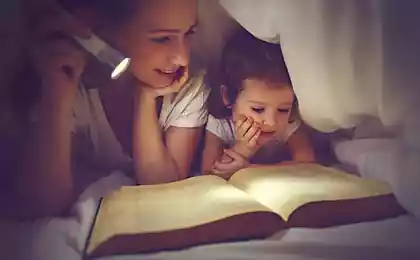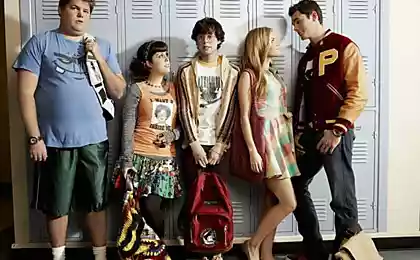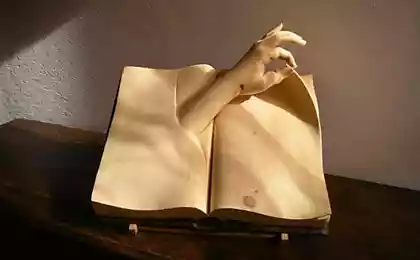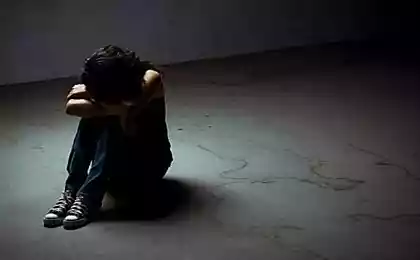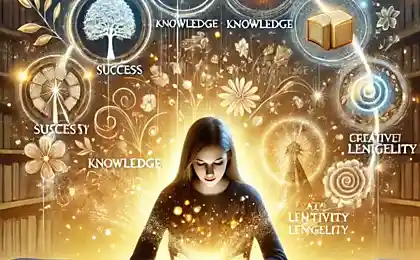247
13 children’s and adolescent books that will help adults start a difficult conversation
These are stories that touch the soul, and talentedly written fiction of those authors who really know how to talk to children and adolescents.
1. "Miracle" by R. J. Palacio
12 years.
About what?Fifth-grader August Pullman - the owner of a funny dog, a fan of Star Wars and computer toys - has to go to school. It’s a difficult time, but for August, it’s very special. Augustus is a boy without a face. Due to a complex genetic mutation, the eyes, mouth, nose and ears on his face are mixed so that you can’t immediately tell where. The 27 plastic surgeries didn't change much. August, in general, used to that many, barely looking at him, immediately turn away. Augustus knows what causes not only pity and surprise, but also fear, and he has learned to live with it in his own way. But now he has to go to a regular school for ordinary children. His mother used to study with him at home, but his parents, realizing that they would not be able to keep him under a glass cap for life, decided to send August to school. Palacio surprisingly managed not to falsify and write an incredibly subtle and accurate study of the nature of friendship, will, fear and, above all, kindness.
Teach you:“Let us introduce a new rule in life ... try always to be a little kinder than necessary and not to judge superficially.” This book is about how to love the “not” child, how to accept yourself and others. A reminder that courage, humor, kindness and friendship can work wonders. And August’s parents are a perfect example of how to listen and hear their children, admit their mistakes, be tough when necessary, and create a real home that attracts both children and their friends.
Amazon and Barnes & Nobles named it the best book of 2012.
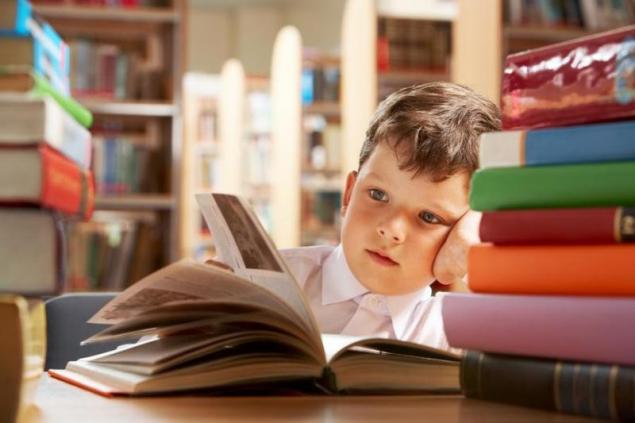
2. The Book of All Things by Hus Küyer
12 years.
What?. Nine-year-old Thomas sees with his own eyes is not what other children are used to seeing. His tropical fish live in the city canals, hail knocks down leaves from trees, and frogs walk the streets. The others don’t see it, and sometimes Thomas gets creepy and scared, and there’s nowhere to go. Sometimes Jesus looks at him. "I'm very glad you're here, Thomas," he writes to Thomas in the sand. The boy grows up in a religious family: his father reads the Bible after dinner, they go to church, pray before meals, and his father beats Thomas’ mother.
What does it teach?. How to stop being afraid, how to protect your world and those you love.
3. The Rabbit View by Kenjiro Haitani
7 years.
About what.Fumi Kotani had just married and had come to work in elementary school for children from the Osaka industrial district near a waste processing plant. Kotani immediately stands out from other teachers because she does not want to formally do her job: she is interested in the lives of students, goes to their homes, comes up with a diary where the children write down their thoughts and feelings (and how many of them turn out to be in children!), takes care of the orphan boy Tetsuzo and takes into the class a girl Minako, who is very different from the others.
What it teaches.How to accept completely different children, sympathize and experience, understand, be able to listen and hear, find a common language.
4. "The Enemy" Serge Block, David Kali
6 years.
About what?The Enemy is an anti-militarist picture book by the world-famous French illustrator Serge Block. A simple and expressively drawn story about the war, which strikes with sincerity and depth.
There's a war. There are two trenches in the desert. Each one has a soldier. They were taught to use weapons and to hate the enemy. The soldier sits in the trench, occasionally shoots, suffers from cold, hunger and loneliness and dreams of returning home. He also wants to see the face of the enemy. After all, bosses assure that the enemy is cruel and kills women and children. “Time goes by, the war doesn’t end,” says Block. Finally, he decides to go see who is sitting in the enemy’s trench. Dresses with a bush and crawls to the enemy trench. But there's nobody there. He goes down into this trench and finds the same textbook as his. The only difference is that this book shows him as a monster. And most importantly, a soldier finds an album with photos of his enemy, his wife, and children. And he thinks, "That's impossible." A monster cannot have children and a wife.”
The Wall Street Journal calls “The Enemy” an elementary school novel “On the Western Front, No Change.” And in terms of impact, this simple but very deep story is more like the Little Prince of Saint-Exupery.
What it teaches.Serge Block’s book provides an opportunity to talk to children about the essence of military conflicts, about the nature of violence invented by man. What is important: thanks to the simple and expressive drawings of the talented artist, both children and adults, not only the problem itself, but also its solution becomes obvious.
5. "Hello, Let's Talk" by Sharon Draper
11 years.
What?. A touching story about an eleven-year-old girl Melody. She hears music and sees its colors, she has a photographic memory, she remembers every detail. Melody is one of the smartest students in the school, and she has cerebral palsy, can't speak and moves around in a wheelchair. The story is told on behalf of the girl herself: her thoughts, feelings, joys and resentments, childhood problems and completely adult experiences. She does things that many in her circumstances simply cannot do. Will the children accept her? Are people ready? Is Melody ready?
What does it teach?. Think about what is going on in the minds of people who are unable to speak and move, receive and help people with disabilities.
6. The Sound of Color by Jimmy Liao
From year
About what?A beautiful journey of a blind girl in the city. She goes with a white cane, goes down to the subway, where the wind does not blow, where it does not rain. The heroine falls not into a dull gray subway with cars and passages, but into an amazing magical world of fantasies. Around it are huge monsters, bright mosaics, heroes of fairy tales, penguins and dogs, labyrinths, parks, cities, angels, gardens. She imagines a completely different dimension, a bright, colorful world.
Each turn of the book you can look at for a very long time, find quite inconspicuous little things. Illustrations fascinate not only children, but also adults: here the heroine swims on a white swan, but flies on the hook of a crane, falls into the air or wanders through a green maze.
What does it teach?. Never despair, invent the world around you and develop your imagination against all odds.
7. "Kuzya, Mishka, Verochka ... and other no-man's children" Tatiana Gubina
10 years.
About what.Completely different life stories about children, parents, employees of orphanages. A collection of stories about the life of an orphan and about the changes in this life after adoption. The book is about the difficult topic of orphanhood, but sometimes you forget about sadness and sincerely rejoice for children and parents who meet in such circumstances and make the life of a friend brighter.
What it teaches.Empathy, humanity, understanding and the ability to look at the situation from the outside. It raises the important issue of adoption.
8. Maria and I, Maria Gayardo and Miguel Gayardo
12 years.
What?. Drawn book about the holidays of a father and daughter in the Canary Islands. Maria is 12 years old, she has a contagious smile, a peculiar sense of humor and autism. A graphical story about the daily experiences of an autistic child, how much joy they bring to parents, and the importance of understanding and accepting them. Maria has a phenomenal memory of people’s names, even if she’s seen them once, she loves swimming in the pool, but it’s hard for her to wear socks. When a girl falls asleep next to her father at the end of her vacation with the words “You and me,” it becomes difficult for him to imagine more beautiful and simple words of love.
What does it teach?. Accepting “other” people and children, trying to understand them, not being shy or afraid, but simply smiling back.
9. The Little Match Trader from Kabul by Diana Mohammadi and Marie Buro
14 years.
What?. French journalist Maria Burro tells the story of an Afghan girl, Diana. She is 13, earns about $2 a day selling matches and handkerchiefs, and promises to be a bodyguard for tourists in Kabul. Her day starts at 4am when she goes with her sister for groceries to the market 2 hours from home. With her sister, she brings 14 kg of food daily. There is no refrigerator in the house, so you have to go to the market every day. There are enough mouths in the house: my mother has 14 children. Diana’s father left for work and no news from him, and you have to pay $100 a month for the house. After school, Diana trades on her street, in the evening - lessons, laundry, cooking, cleaning and again a new day. It is not a childish view of life, Muslim customs, cultural peculiarities, the early maturation of a child, the politics and history of Afghanistan, the responsibility placed on fragile but at the same time such strong shoulders.
What it teaches.Makes you think about social inequality, about children who have no childhood and who are forced to work from the age of 4 on the street, starve and suffer.
10. “Family Heirloom” by Peter Gorelyk
7 years.
About what.The narration is conducted on behalf of the buttons that have been lying in the grandmother's box for many years. Before the reader unfolds the terrible events of the Russian-French war of 1812. “All Europe lay at the feet of our emperor. There was Russia, says Jean, a French button about the heavy fighting, the horrors and fears of war, the eating of horses by cuirassiers, the fire in Moscow. Another button tells about the Great Patriotic War: the life of ordinary people, the life of the famous Order of the Red Banner of the Orel regiment, bombing, shooting, wounding. Pyotr Gorelyk, a military officer who passed the war, talks about the war and at the same time about simple human joys, shows the fate of individuals and a whole people.
What it teaches.The denial of war in all its manifestations, the fact that under no circumstances can you shoot people.
11. “Sugar child” Olga Gromova
10 years.
What?. “Sugar Child” is the true story of a girl Eli, who at the age of 5 suddenly turned out to be the daughter of an enemy of the people. A child who grew up in absolute love, in a prosperous family with all the charms of intelligent Moscow life, suddenly loses everything and goes with his mother to Kyrgyzstan, to a camp for family members of enemies of the people. The complex pages of Soviet history of the late 1930s are shown through the prism of children’s perception and selective memory. A little girl and her young mother maintain their composure, presence of spirit and self-esteem despite severe trials, hunger and illness. And strangely enough, in life in the most desperate moments they meet very good people.
Teach you:“Sugar Child” is an amazing novel of growing up and a novel-education. A story about how to raise a child’s resistance to life, which is not necessarily easy. What to do and what to teach in difficult situations, when the usual world collapses. The book reminds us how unpredictable life is, and makes us ask ourselves painful questions: can we teach our children courage, courage, and freedom? Would you be able to find the right words in time, read the right poems, explain to the child the essence of what is happening? With the right questions, the search for answers begins.
12. Yevgeny Yelchin, “Stalin’s Nose”
12 years.
About what.Through the eyes of a child, Yevgeny Yelchin described all our common Soviet past, fantastically compressed into one terrible day. “Stalin’s Nose” is written on behalf of the boy Sasha Zaychik. In the morning at school, he should be accepted as a pioneer, and Sashin’s father, an NKVD officer who received a “hero” personally from Stalin, should come to school and tie ties on the pioneer lineup. In anticipation of an important and joyful day, the boy writes a letter to Comrade Stalin and thanks him for his happy childhood. But childhood ends at the same moment. The doorbell rings. And NKVD officers arrest the pope in front of the baby. The familiar world, ideas of good and evil, a sense of stability and justice of the world order crumble in an instant. From an example for classmates, a child becomes an outcast whose face is covered with ink in a group school photo.
What does it teach?. The book is valuable because it gives adults—parents, schoolteachers, library workers—the opportunity to engage in an important and serious conversation about Stalinism with their children and shows how to do it. The author, unfortunately, reduces the degree of experience when he turns the description of real events into phantasmagoria, but the unreality of what is happening helps the child to survive the horror of such a past.
13. Three of Your Names by Dean Sabitov
12 years.
About what.The piercing story of a child who lost his parents and ended up in an orphanage. Dina Sabitova honestly and life tells about how fate can develop. Ritka, Margot, Goshka. Three names, three stories. Ritka had a half-starved childhood in a remote Siberian village, parents drank and almost did not engage in their daughter, but they were. After the fire, the girl was left an orphan.
Margot took a school nurse from the orphanage, and the girl tries very hard to be obedient, diligent and invisible. But the foster family moves to another city, and the “daughter” is returned to the orphanage.
Goshka is already too old to hope for adoption, but desperately wants to be someone’s daughter, loved and loved again. And her dream of a real home finally comes true.
Ritka-Margo-Goshka is the same girl, Margarita. Her story would last a few lives. Dina Sabitova describes each stage separately, offering an alternative ending at the end of each part. How could the fate of Ritka, if the father survived; Margot would be happy if the adoptive father persuaded his wife not to abandon the girl and so on. A child must share this book with an adult, because children read with their hearts, and it is not easy for a young heart to absorb the truth about the injustice of life.
What it teaches.The book is written so simply and honestly that a teenager who will read it will think about the life of a child who lost his parents. The desperation you get when you want to, but you can't find a new family to love. Ritkin’s story eliminates the illusions of “eternal well-being,” from happiness to misfortune, just one short step. But fortunately, there is a road too. published
P.S. And remember, just changing our consumption – together we change the world!
Source: www.stranamam.ru/post/9433788/
1. "Miracle" by R. J. Palacio
12 years.
About what?Fifth-grader August Pullman - the owner of a funny dog, a fan of Star Wars and computer toys - has to go to school. It’s a difficult time, but for August, it’s very special. Augustus is a boy without a face. Due to a complex genetic mutation, the eyes, mouth, nose and ears on his face are mixed so that you can’t immediately tell where. The 27 plastic surgeries didn't change much. August, in general, used to that many, barely looking at him, immediately turn away. Augustus knows what causes not only pity and surprise, but also fear, and he has learned to live with it in his own way. But now he has to go to a regular school for ordinary children. His mother used to study with him at home, but his parents, realizing that they would not be able to keep him under a glass cap for life, decided to send August to school. Palacio surprisingly managed not to falsify and write an incredibly subtle and accurate study of the nature of friendship, will, fear and, above all, kindness.
Teach you:“Let us introduce a new rule in life ... try always to be a little kinder than necessary and not to judge superficially.” This book is about how to love the “not” child, how to accept yourself and others. A reminder that courage, humor, kindness and friendship can work wonders. And August’s parents are a perfect example of how to listen and hear their children, admit their mistakes, be tough when necessary, and create a real home that attracts both children and their friends.
Amazon and Barnes & Nobles named it the best book of 2012.

2. The Book of All Things by Hus Küyer
12 years.
What?. Nine-year-old Thomas sees with his own eyes is not what other children are used to seeing. His tropical fish live in the city canals, hail knocks down leaves from trees, and frogs walk the streets. The others don’t see it, and sometimes Thomas gets creepy and scared, and there’s nowhere to go. Sometimes Jesus looks at him. "I'm very glad you're here, Thomas," he writes to Thomas in the sand. The boy grows up in a religious family: his father reads the Bible after dinner, they go to church, pray before meals, and his father beats Thomas’ mother.
What does it teach?. How to stop being afraid, how to protect your world and those you love.
3. The Rabbit View by Kenjiro Haitani
7 years.
About what.Fumi Kotani had just married and had come to work in elementary school for children from the Osaka industrial district near a waste processing plant. Kotani immediately stands out from other teachers because she does not want to formally do her job: she is interested in the lives of students, goes to their homes, comes up with a diary where the children write down their thoughts and feelings (and how many of them turn out to be in children!), takes care of the orphan boy Tetsuzo and takes into the class a girl Minako, who is very different from the others.
What it teaches.How to accept completely different children, sympathize and experience, understand, be able to listen and hear, find a common language.
4. "The Enemy" Serge Block, David Kali
6 years.
About what?The Enemy is an anti-militarist picture book by the world-famous French illustrator Serge Block. A simple and expressively drawn story about the war, which strikes with sincerity and depth.
There's a war. There are two trenches in the desert. Each one has a soldier. They were taught to use weapons and to hate the enemy. The soldier sits in the trench, occasionally shoots, suffers from cold, hunger and loneliness and dreams of returning home. He also wants to see the face of the enemy. After all, bosses assure that the enemy is cruel and kills women and children. “Time goes by, the war doesn’t end,” says Block. Finally, he decides to go see who is sitting in the enemy’s trench. Dresses with a bush and crawls to the enemy trench. But there's nobody there. He goes down into this trench and finds the same textbook as his. The only difference is that this book shows him as a monster. And most importantly, a soldier finds an album with photos of his enemy, his wife, and children. And he thinks, "That's impossible." A monster cannot have children and a wife.”
The Wall Street Journal calls “The Enemy” an elementary school novel “On the Western Front, No Change.” And in terms of impact, this simple but very deep story is more like the Little Prince of Saint-Exupery.
What it teaches.Serge Block’s book provides an opportunity to talk to children about the essence of military conflicts, about the nature of violence invented by man. What is important: thanks to the simple and expressive drawings of the talented artist, both children and adults, not only the problem itself, but also its solution becomes obvious.
5. "Hello, Let's Talk" by Sharon Draper
11 years.
What?. A touching story about an eleven-year-old girl Melody. She hears music and sees its colors, she has a photographic memory, she remembers every detail. Melody is one of the smartest students in the school, and she has cerebral palsy, can't speak and moves around in a wheelchair. The story is told on behalf of the girl herself: her thoughts, feelings, joys and resentments, childhood problems and completely adult experiences. She does things that many in her circumstances simply cannot do. Will the children accept her? Are people ready? Is Melody ready?
What does it teach?. Think about what is going on in the minds of people who are unable to speak and move, receive and help people with disabilities.
6. The Sound of Color by Jimmy Liao
From year
About what?A beautiful journey of a blind girl in the city. She goes with a white cane, goes down to the subway, where the wind does not blow, where it does not rain. The heroine falls not into a dull gray subway with cars and passages, but into an amazing magical world of fantasies. Around it are huge monsters, bright mosaics, heroes of fairy tales, penguins and dogs, labyrinths, parks, cities, angels, gardens. She imagines a completely different dimension, a bright, colorful world.
Each turn of the book you can look at for a very long time, find quite inconspicuous little things. Illustrations fascinate not only children, but also adults: here the heroine swims on a white swan, but flies on the hook of a crane, falls into the air or wanders through a green maze.
What does it teach?. Never despair, invent the world around you and develop your imagination against all odds.
7. "Kuzya, Mishka, Verochka ... and other no-man's children" Tatiana Gubina
10 years.
About what.Completely different life stories about children, parents, employees of orphanages. A collection of stories about the life of an orphan and about the changes in this life after adoption. The book is about the difficult topic of orphanhood, but sometimes you forget about sadness and sincerely rejoice for children and parents who meet in such circumstances and make the life of a friend brighter.
What it teaches.Empathy, humanity, understanding and the ability to look at the situation from the outside. It raises the important issue of adoption.
8. Maria and I, Maria Gayardo and Miguel Gayardo
12 years.
What?. Drawn book about the holidays of a father and daughter in the Canary Islands. Maria is 12 years old, she has a contagious smile, a peculiar sense of humor and autism. A graphical story about the daily experiences of an autistic child, how much joy they bring to parents, and the importance of understanding and accepting them. Maria has a phenomenal memory of people’s names, even if she’s seen them once, she loves swimming in the pool, but it’s hard for her to wear socks. When a girl falls asleep next to her father at the end of her vacation with the words “You and me,” it becomes difficult for him to imagine more beautiful and simple words of love.
What does it teach?. Accepting “other” people and children, trying to understand them, not being shy or afraid, but simply smiling back.
9. The Little Match Trader from Kabul by Diana Mohammadi and Marie Buro
14 years.
What?. French journalist Maria Burro tells the story of an Afghan girl, Diana. She is 13, earns about $2 a day selling matches and handkerchiefs, and promises to be a bodyguard for tourists in Kabul. Her day starts at 4am when she goes with her sister for groceries to the market 2 hours from home. With her sister, she brings 14 kg of food daily. There is no refrigerator in the house, so you have to go to the market every day. There are enough mouths in the house: my mother has 14 children. Diana’s father left for work and no news from him, and you have to pay $100 a month for the house. After school, Diana trades on her street, in the evening - lessons, laundry, cooking, cleaning and again a new day. It is not a childish view of life, Muslim customs, cultural peculiarities, the early maturation of a child, the politics and history of Afghanistan, the responsibility placed on fragile but at the same time such strong shoulders.
What it teaches.Makes you think about social inequality, about children who have no childhood and who are forced to work from the age of 4 on the street, starve and suffer.
10. “Family Heirloom” by Peter Gorelyk
7 years.
About what.The narration is conducted on behalf of the buttons that have been lying in the grandmother's box for many years. Before the reader unfolds the terrible events of the Russian-French war of 1812. “All Europe lay at the feet of our emperor. There was Russia, says Jean, a French button about the heavy fighting, the horrors and fears of war, the eating of horses by cuirassiers, the fire in Moscow. Another button tells about the Great Patriotic War: the life of ordinary people, the life of the famous Order of the Red Banner of the Orel regiment, bombing, shooting, wounding. Pyotr Gorelyk, a military officer who passed the war, talks about the war and at the same time about simple human joys, shows the fate of individuals and a whole people.
What it teaches.The denial of war in all its manifestations, the fact that under no circumstances can you shoot people.
11. “Sugar child” Olga Gromova
10 years.
What?. “Sugar Child” is the true story of a girl Eli, who at the age of 5 suddenly turned out to be the daughter of an enemy of the people. A child who grew up in absolute love, in a prosperous family with all the charms of intelligent Moscow life, suddenly loses everything and goes with his mother to Kyrgyzstan, to a camp for family members of enemies of the people. The complex pages of Soviet history of the late 1930s are shown through the prism of children’s perception and selective memory. A little girl and her young mother maintain their composure, presence of spirit and self-esteem despite severe trials, hunger and illness. And strangely enough, in life in the most desperate moments they meet very good people.
Teach you:“Sugar Child” is an amazing novel of growing up and a novel-education. A story about how to raise a child’s resistance to life, which is not necessarily easy. What to do and what to teach in difficult situations, when the usual world collapses. The book reminds us how unpredictable life is, and makes us ask ourselves painful questions: can we teach our children courage, courage, and freedom? Would you be able to find the right words in time, read the right poems, explain to the child the essence of what is happening? With the right questions, the search for answers begins.
12. Yevgeny Yelchin, “Stalin’s Nose”
12 years.
About what.Through the eyes of a child, Yevgeny Yelchin described all our common Soviet past, fantastically compressed into one terrible day. “Stalin’s Nose” is written on behalf of the boy Sasha Zaychik. In the morning at school, he should be accepted as a pioneer, and Sashin’s father, an NKVD officer who received a “hero” personally from Stalin, should come to school and tie ties on the pioneer lineup. In anticipation of an important and joyful day, the boy writes a letter to Comrade Stalin and thanks him for his happy childhood. But childhood ends at the same moment. The doorbell rings. And NKVD officers arrest the pope in front of the baby. The familiar world, ideas of good and evil, a sense of stability and justice of the world order crumble in an instant. From an example for classmates, a child becomes an outcast whose face is covered with ink in a group school photo.
What does it teach?. The book is valuable because it gives adults—parents, schoolteachers, library workers—the opportunity to engage in an important and serious conversation about Stalinism with their children and shows how to do it. The author, unfortunately, reduces the degree of experience when he turns the description of real events into phantasmagoria, but the unreality of what is happening helps the child to survive the horror of such a past.
13. Three of Your Names by Dean Sabitov
12 years.
About what.The piercing story of a child who lost his parents and ended up in an orphanage. Dina Sabitova honestly and life tells about how fate can develop. Ritka, Margot, Goshka. Three names, three stories. Ritka had a half-starved childhood in a remote Siberian village, parents drank and almost did not engage in their daughter, but they were. After the fire, the girl was left an orphan.
Margot took a school nurse from the orphanage, and the girl tries very hard to be obedient, diligent and invisible. But the foster family moves to another city, and the “daughter” is returned to the orphanage.
Goshka is already too old to hope for adoption, but desperately wants to be someone’s daughter, loved and loved again. And her dream of a real home finally comes true.
Ritka-Margo-Goshka is the same girl, Margarita. Her story would last a few lives. Dina Sabitova describes each stage separately, offering an alternative ending at the end of each part. How could the fate of Ritka, if the father survived; Margot would be happy if the adoptive father persuaded his wife not to abandon the girl and so on. A child must share this book with an adult, because children read with their hearts, and it is not easy for a young heart to absorb the truth about the injustice of life.
What it teaches.The book is written so simply and honestly that a teenager who will read it will think about the life of a child who lost his parents. The desperation you get when you want to, but you can't find a new family to love. Ritkin’s story eliminates the illusions of “eternal well-being,” from happiness to misfortune, just one short step. But fortunately, there is a road too. published
P.S. And remember, just changing our consumption – together we change the world!
Source: www.stranamam.ru/post/9433788/





